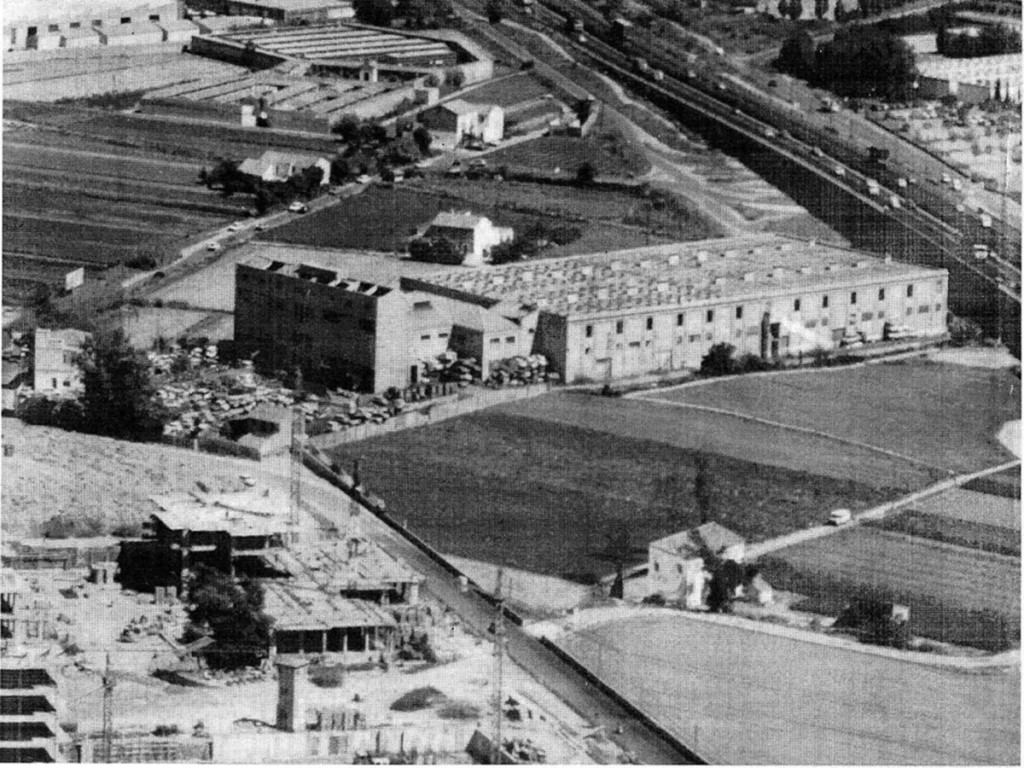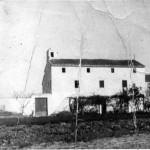Càmeres Beccari
Date:
Address: Las cámaras Beccari estaban donde actualmente se encuentra el Centro Superior de Investigación de Salud Pública (CSISP) entre Avenida Cataluña y Doctor Vicente Zaragozá
Architects:
The warehouse known as “las cámaras Beccari” stood where we currently find the Centre for Advanced Studies of Public Health (Centro Superior de Investigación de Salud Pública, CSISP), between the highway Avenida Cataluña and the Doctor Vicente Zaragozá street.
The construction of this warehouse began in 1932. Its purpose was to treat and recycle the garbage of the city. The initiative came from City Hall, led at the time by Alfonso Moreno Vicente, mayor of Valencia between October 1931 and June 1932. People remember that, in the building, items were selected and the garbage was left to ferment. There was no recycling of the kind we see today, because there was not that much plastic around and whoever owned a glass bottle kept it and reused it.
The construction caused lots of protests among the working classes of the urban periphery, since it was to be a general installation for unusable matter, interpreted as a city garbage dump. The Board of the Casino (Casino Instructivo y Benéfico) of Benimaclet took the lead in the struggle against it.
And there were consequences, as can be seen in the newspaper La Vanguardia, which on Friday, October 27, 1933, wrote: “The administrative court has determined to accept the placing of the Cámaras Beccari proposed by the Valencian City Improvement Company (Compañía Valenciana de Mejoras Urbanas) and thus not accept the appeal submitted by the inhabitants of Benimaclet against the Valencian City Hall decision.”
On April 5, 1936, the newspaper ABC reported that the Beccari warehouse was to be closed due to its being “a constant danger to public health” – after having cost various millions of pesetas.
This agrarian building consisted of cube-shaped spaces, which made it possible for it to serve as a refuge for the many persons who lost their homes in the 1957 flood. Lots of people went there to donate, charitably and in all humility, whatever they could.
The Beccari warehouse remained in place without being put to any other use than to serve as storage of vehicles that had been removed from the streets.
In the early 1970s it suffered a major fire, and in the 1980s it was torn down.
In 1988 the news came, later confirmed, that the company El Corte Inglés was getting in touch with the owners in order to buy this land and build a shopping centre there. The site had various owners, among them City Hall itself. It was defined as GSP-4/129 in the general urban development plan (Plan General de Ordenación Urbana). The land was classified as one fourth “institutional”, which meant that only public buildings could be erected there. The other three fourths were for tertiary use: land for the construction of buildings for services. To build apartments on it was impossible. As you can see, El Corte Inglés did not manage to carry out its objective.
In the place where las cámaras Beccari used to stand, today you can see the building of the research institute “Centro Superior de Investigación en Salud Pública (CSISP)”, i.e. the Centre for Advanced Studies of Public Health. It also houses the General Directorate of Research and Public Health. It can be interpreted as an ironic nod of history that this spot, which once held an installation that was considered a danger for public health, now sports institutions whose purpose it is to defend, protect and promote it, and its activities include precisely the study of dangers to health and the coordination of research initiatives and projects related to the evaluation of the impact on health of various environmental risks.
In the place where las cámaras Beccari used to stand, today you can see the building of the research institute “Centro Superior de Investigación en Salud Pública (CSISP)”, i.e. the Centre for Advanced Studies of Public Health. It also houses the General Directorate of Research and Public Health. It can be interpreted as an ironic nod of history that this spot, which once held an installation that was considered a danger for public health, now sports institutions whose purpose it is to defend, protect and promote it, and its activities include precisely the study of dangers to health and the coordination of research initiatives and projects related to the evaluation of the impact on health of various environmental risks.



